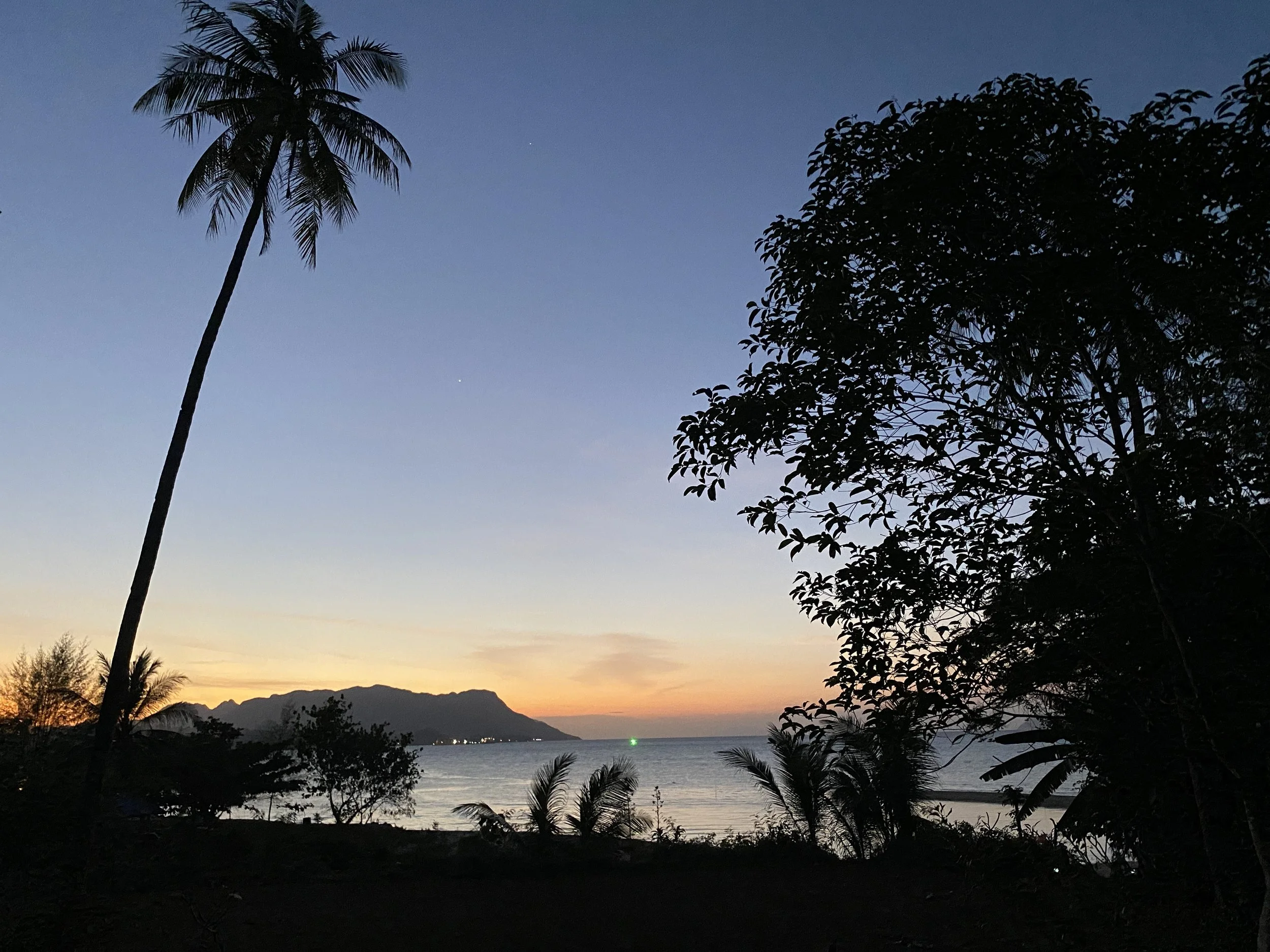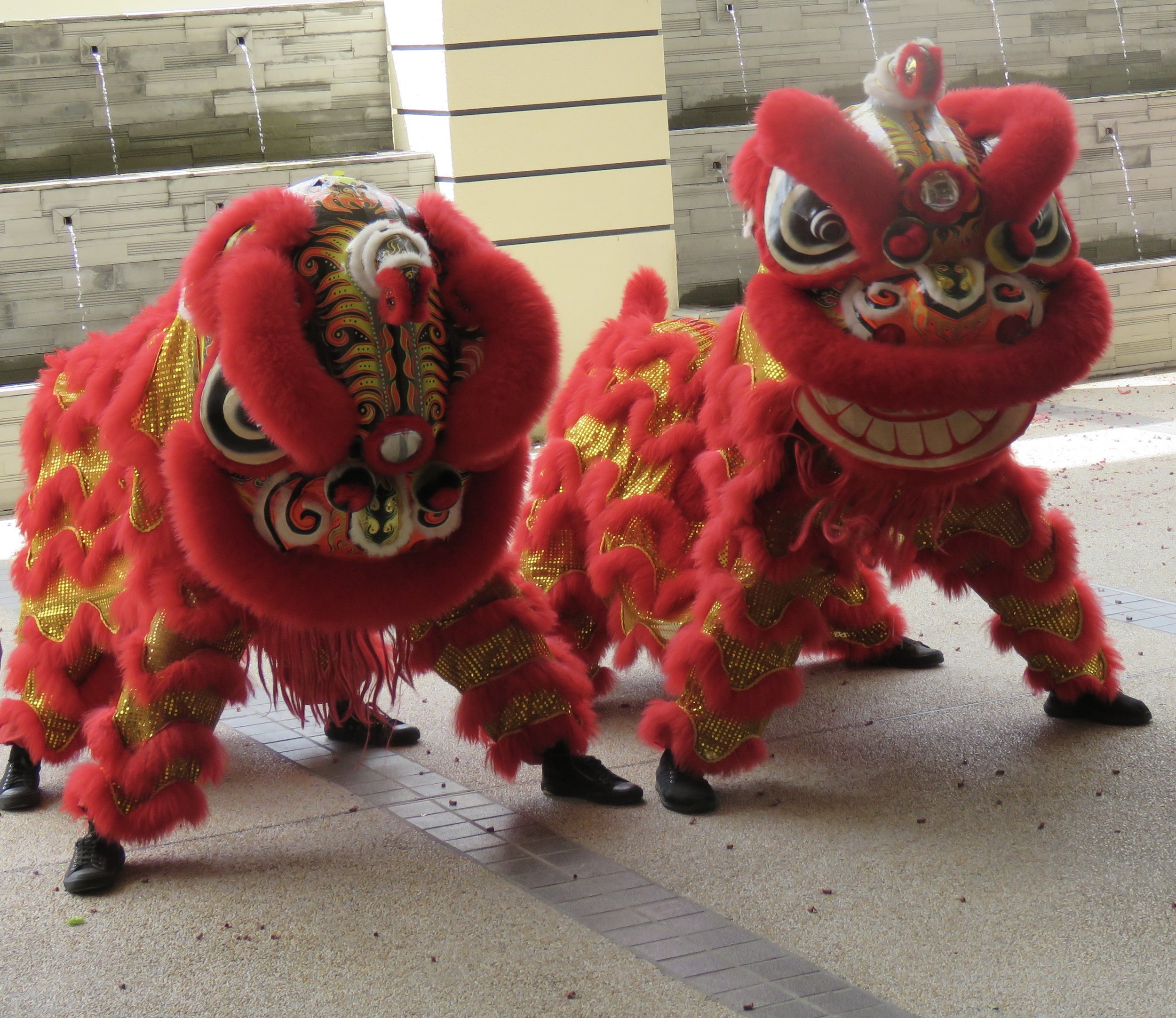As with all places we visit and write about, we don’t pretend to know the place like locals do! We do, however, want to share what our visit was like, what we learned and liked and what we did and saw. So this is only a reflection of what we experienced on our two-and-a-half months on Langkawi, a tropical island off the north west coast of Malaysia, a stone throw from the southern border of Thailand.
We flew in from Kuala Lumpur, Malaysia’s capital city. The one hour flight brought us to the center of the island of Langkawi.
The entire archipelago has been designated as a UNESCO Global Geopark, located in the Andaman Sea and consists of almost a hundred karst limestone islands with a fascinating history and strong mythology. The islands seem to be floating legends surrounded by blue water.
Scarecrows in a rice paddy: which one does not belong?
Having rented a small beach house (via AirBnB) and a small car on the north end of the island, we started by exploring our new surroundings. We’re pleasantly surprised by the traffic. You drive on the left - a legacy often left by the British. And yes, there are idiots who drive way too fast and pass on an uphill stretch with no view of oncoming traffic. But by and large, traffic is easy and quiet and no problem at all. Many signs are in Malay but you soon figure out that ‘Awas’ means ‘Attention’ and regular traffic signs have the same shape and colours as elsewhere. And… no one honks!
One unusual thing we encountered here: our rental car came with an empty gas tank. We were told ‘Of course, you have to buy your own gas.’ But then, we drove 7 weeks all over the island for a grand total of about 30.- worth of gas.
Not all stores or smaller restaurants on Langkawi actually accept credit cards, it’s quite common to have to pay cash. So we needed to find an ATM. These are in many locations, even right along the road, and so getting local money (Malaysian ringgits or RM) is easy. It’s a safe place so we never felt uneasy as we sometimes do while getting money from a machine. Langkawi is a tax-free island and tipping is not normally done here, making it an affordable place to stay.
A traditional Malay home.
The main town on the island, on the southern side, is called Kuah. This is where the port is as well as the ferries to the Malaysian mainland. We found a supermarket here to stock up on staples like toilet paper, sugar and milk. The few larger, Chinese supermarkets on the island offer some western items that you won’t find in little local shops: yogurt, cheese and western style bread.
Being in a Muslim country, alcohol is not readily available but it is possible to find it in shops and in some restaurants.
The supermarket we found near the airport is like a huge warehouse with a corrugated sheet metal roof and storage boxes and crates everywhere. There are a few shopping carts but no straight isles and often you get stuck between piles of boxes and have to back up. Buying beer or wine here is hilarious. We only found it because a western had explained it to us: we had to find the furthest corner in the store, walk through a curtain of thick plastic strips, go down a narrow hall full of storage boxes, then open a wooden door and suddenly we found ourselves in a well hidden but state of the art liquor shop… Beautifully lined shelves with a great, tax-free assortment but hidden like a vault.
Eventually we also found a Chinese bakery with great whole wheat bread. Even though Kuah is a small city, it has gas stations and lots of shops, a mall, a huge park along the water front, a marina, excellent hospitals and little western pubs but also endless local Malay and Chinese eateries. In our blog A Taste of Langkawi, you can read more about local food and the weekly Night Market which offers amazing, and cheap, food.
All schools here are yellow/orangy buildings.
Elsewhere on the island are small villages, stretched out along a main road, with small shops, some not more than a few shelves in someone’s car port. We ‘live’ in the north end along Tanjung Rhu beach near the village called Ayer Hangat. Each village has a few shops and lots of little restaurants, farm stands, fruit stalls, a cell phone shop and a small temple.
The other main urban area is the very south west part of the island: Cenang. This is where large hotels and resorts are, often several stories tall. There are tourist attractions like an Aquarium, pubs with loud music, you can rent jet-skis and go para-sailing. That is the area we tried to avoid. The northern beaches are gorgeous and quiet.
Kraf Complex Langkawi
We stopped at an enormous ‘Kraf Complex’ - a government funded complex consisting of a main hall full of individual artists’ shops as well as workshops, a glassblowers’ workshop, meeting area, a small restaurant and gardens. The individual shop owners seem to be mostly women and sell their own crafts like wood cuttings, leather, a lot of batik and clothing, handmade glass ornaments, jewelry and much more. Elsewhere on the island we did not find a lot of handicrafts or local souvenirs besides cheap plastic keychains.
Early on in our visit here, we were lucky enough to experience Chinese New Year. A local group performed traditional Lion dances. This started with a head of lettuce dangling from the ceiling which the Lion had to devour (‘lettuce’ means ‘wealth’ in Chinese). They were fed oranges and chased away evil…
Here’s a sentence I never thought I’d say: A fun place to visit was the ‘rice museum’ - Laman Padi. Here you can see how rice is planted, cultivated, grown, harvested and used. You can stroll in between rice paddies where water buffaloes roam, often each with their own bird on their back. There are traditional, preserved houses to look inside and a small museum building with tools and equipment of rice harvests through the ages.
The well where Mahsuri washed her face.
We also visited a museum dedicated to both a legend and a real life person who lived here hundreds of years ago. People in Malaysia love stories and hisotry here is steeped in legends. The best known Langkawi legend is that of Mahsuri and is based on historic facts but embellished over time:
“Mahsuri was a pretty maiden who lived in Langkawi between 1762 and 1800. She grew up to be a beautiful young woman of marrying age. From many suitors, Mahsuri married Wan Darus, the brother of the village headman.
Their idyllic life was disrupted when Wan Darus left to fight against the invading Siamese army. During this time Mahsuri befriended a young wandering minstrel named Deraman. The village chief’s wife Wan Mahora, who was always jealous of Mahsuri’s beauty, accused her of adultery in the absence of Wan Darus. Mahsuri was tied to a tree to await her punishment. She pleaded innocence but no one believed her. She was finally sentenced to death, but none of their daggers or swords could kill her. Resigned to her fate, Mahsuri told them to kill her with her father’s ceremonial keris. When she was stabbed, white blood flowed from the wound, signifying her innocence. With her dying breath, Mahsuri cursed Langkawi with seven generations of bad luck. Langkawi then indeed experienced a series of bad fortunes – from the Siamese invasion to droughts and floods, prompting the populace to believe in the Mahsuri curse.”
The museum complex has different buildings dedicated to the era. You can see clothing, weaponry, cooking utensils. There are preserved kampung houses with woven roofs. The website shows more exciting displays then we actually saw. There was no dancing but there were a few musicians playing traditional instruments. A fun way to spend an afternoon and learn about local history.
In a next Langkawi blog we’ll take you along as we explore the natural side of this beautiful island.
And… lest you think this is 100% paradise: there are lots of tiny ants, even in our bed. We need to keep everything, even the sugar and the cereal, in the fridge so the ants don’t move into the boxes. There are mosquitoes preventing us from sitting outside after sun down… There are cockroaches aglore. Thank goodness we have not seen the king cobra which is not uncommon on Langkawi and apparently they were several times in houses we stayed in. But we have seen several Australian-sized spiders…
RESOURCES:
• https://www.langkawi-insight.com/
• https://www.facebook.com/lamanpadilangkawiofficial/














